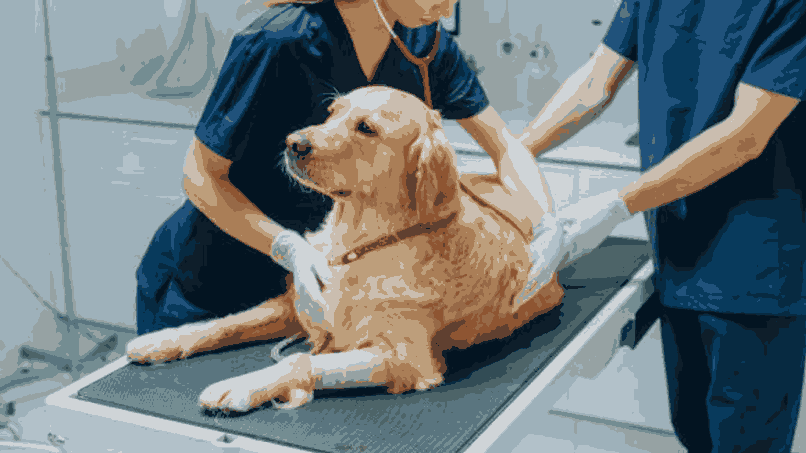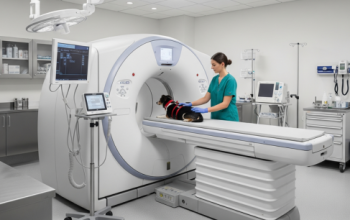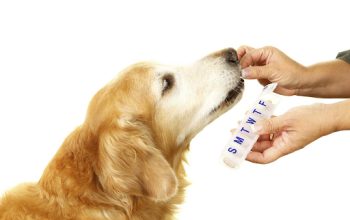As a dog parent, you are always looking for the best ways to keep your furry friend healthy and help them recover from injuries or health conditions.
One innovation that has been gaining attention is hyperbaric oxygen therapy for dogs (HBOT).
This non-invasive treatment basically involves placing your pet inside a specialized chamber to breathe in pure oxygen at increased atmospheric pressure.
The therapy promotes healing by increasing oxygen levels in the blood. It helps in repairing damaged tissues, reducing swelling and supporting faster recovery.
Here, we will dive into steps to find the clinic that offers HBOT in your area.
Step 1: Understand What Hyperbaric Oxygen Therapy Is
Before you start looking for clinics, it’s important to understand what hyperbaric oxygen therapy is and how it benefits your dog. HBOT increases the amount of oxygen your pet’s blood can carry by placing them in a chamber with 100% oxygen under high pressure. This process speeds up healing, especially for conditions like wounds, infections, and surgical recovery.
Veterinary hyperbaric oxygen therapy has shown remarkable results in treating various conditions such as:
- Cranial and spinal cord trauma
- Infections like Lyme disease and osteomyelitis
- Musculoskeletal injuries like fractures and tendonitis
- Respiratory issues, including pulmonary edema and sinusitis
Knowing what to expect from the therapy and the types of conditions, it can treat will help you assess whether it’s a good option for your pet.
Step 2: Research Local Veterinary Clinics
Once you understand how hyperbaric treatment for dogs works, the next step is to find a clinic near you. Since this type of therapy is still relatively new in veterinary care, not all clinics offer it. Start by:
- Searching online for veterinary clinics in your area that specialize in advanced treatments like HBOT.
- Asking your regular veterinarian if they offer hyperbaric oxygen therapy or can refer you to a nearby clinic.
- Searching for animal hospitals or specialty centers that focus on neurology, surgery, or rehabilitation, as these clinics are more likely to offer HBOT.
Step 3: Look for Clinics with Specialized Equipment
When searching for a clinic, make sure that the facility has the proper equipment for hyperbaric oxygen treatment for dogs. Many human hospitals offer HBOT, but veterinary clinics use chambers designed specifically for pets. These chambers are typically acrylic and allow for better observation of your pet during the session. A good clinic will also ensure that your dog’s safety and comfort are a top priority.
Look for clinics that provide:
- A veterinary-specific HBOT chamber with full observation capabilities.
- An HBOT-trained technician who stays with the dog during the session.
- An overseeing veterinarian who ensures your pet is a good candidate for the treatment.
Step 4: Ask About Experience and Qualifications
When considering a clinic for veterinary hyperbaric oxygen therapy, experience matters. Ensure that the clinic has professionals who are specifically trained in providing HBOT for pets. You should ask:
- How long the clinic has been offering HBOT for animals.
- The number of successful treatments they’ve performed on dogs with similar conditions to your pet.
- If the clinic has any certifications or affiliations with professional organizations related to veterinary medicine and HBOT.
The more experienced the clinic, the better the care your pet will receive.
Step 5: Check for Reviews and Testimonials
Reviews from other pet owners can be a valuable source of information. Search for feedback from clients who have used the clinic for HBOT treatments. Look for:
- Success stories about how HBOT helped pets recover from injuries or conditions.
- Any potential concerns or issues that were raised by other pet owners.
- Ratings and reviews of the clinic’s overall experience, including customer service and treatment outcomes.
You can find reviews on the clinic’s website, social media pages, or independent review platforms like Google or Yelp.
Step 6: Consider the Cost and Frequency of Treatment
Hyperbaric oxygen treatment for dogs can be an investment, so it’s important to know what you’re committing to financially. Costs vary by location, the type of condition being treated, and the number of sessions required. Some clinics offer package deals for multiple sessions, while others charge per treatment.
When considering the cost, also think about:
- How many sessions your dog might need to see improvement. This varies depending on the condition being treated.
- If the clinic accepts pet insurance or offers financing options.
- Whether they offer any discounts for multiple treatments or referrals.
Step 7: Schedule a Consultation
Once you’ve made a list of your options, schedule a consultation with the clinic. This will give you the opportunity to:
- Meet the staff and ask any remaining questions about the therapy.
- Tour the facility and see the chamber your dog will be treated in.
- Ensure that the clinic’s approach to care aligns with your pet’s needs and your expectations.
During the consultation, ask about the specific conditions the clinic treats with HBOT and whether they’ve successfully treated dogs with similar issues to yours.
Step 8: Monitor Your Dog’s Progress
After your pet begins hyperbaric oxygen therapy for dogs, be sure to monitor their progress and report any changes to the clinic. HBOT can speed up recovery, but it’s essential to keep track of how your dog is responding to the treatment.
If you notice any side effects or if your dog isn’t improving as expected, discuss it with the clinic to make any necessary adjustments.
Conclusion
Finding the right clinic that offers hyperbaric oxygen treatment for dogs is an essential step in ensuring your pet receives the best possible care. By researching local clinics, looking for experienced professionals, and understanding the treatment process, you can confidently make an informed decision. Whether you’re treating a specific injury or supporting general healing, HBOT has the potential to significantly improve your dog’s recovery and quality of life.



